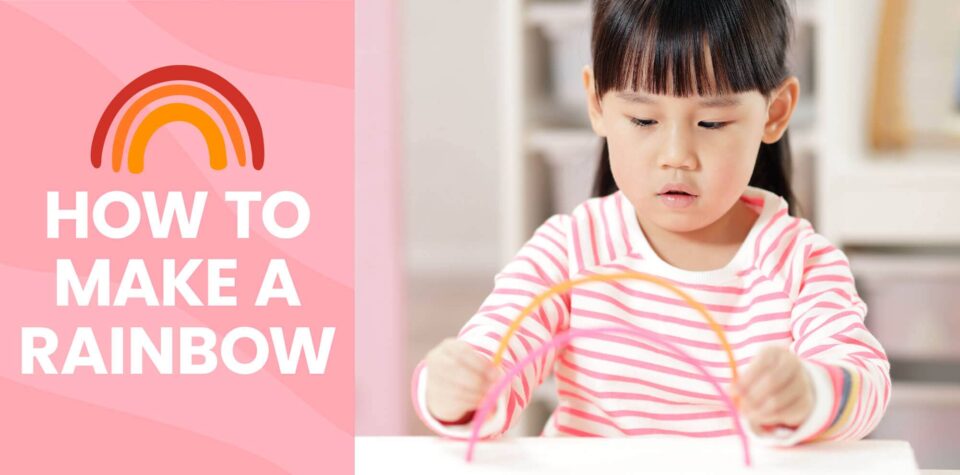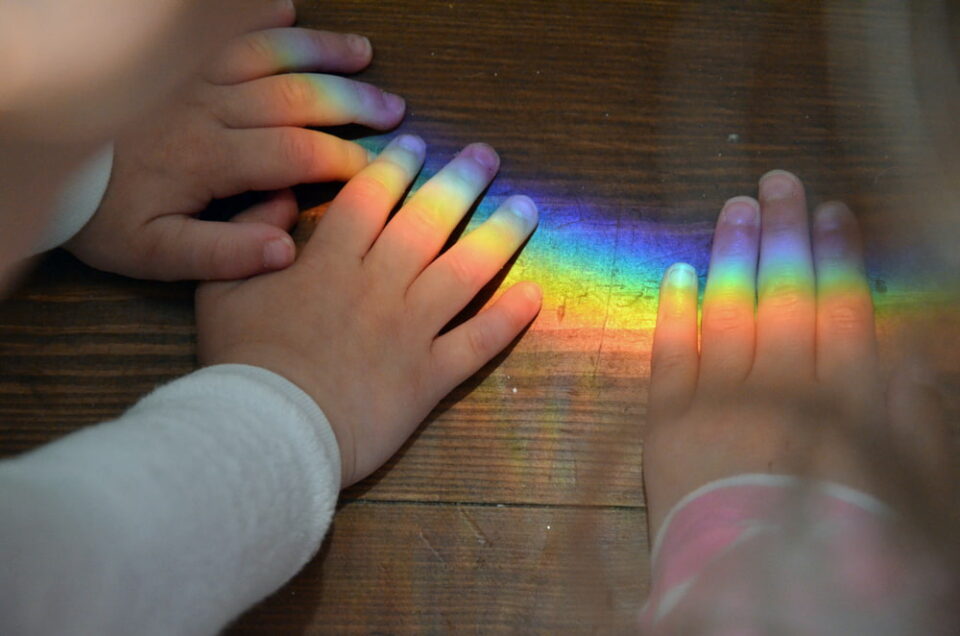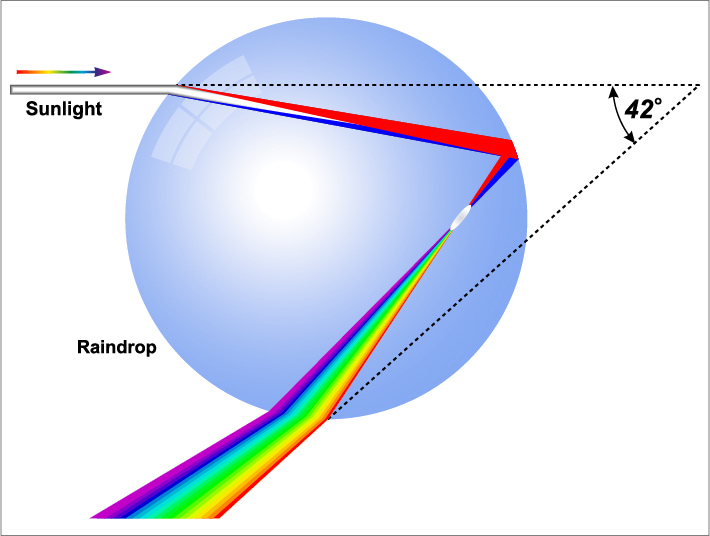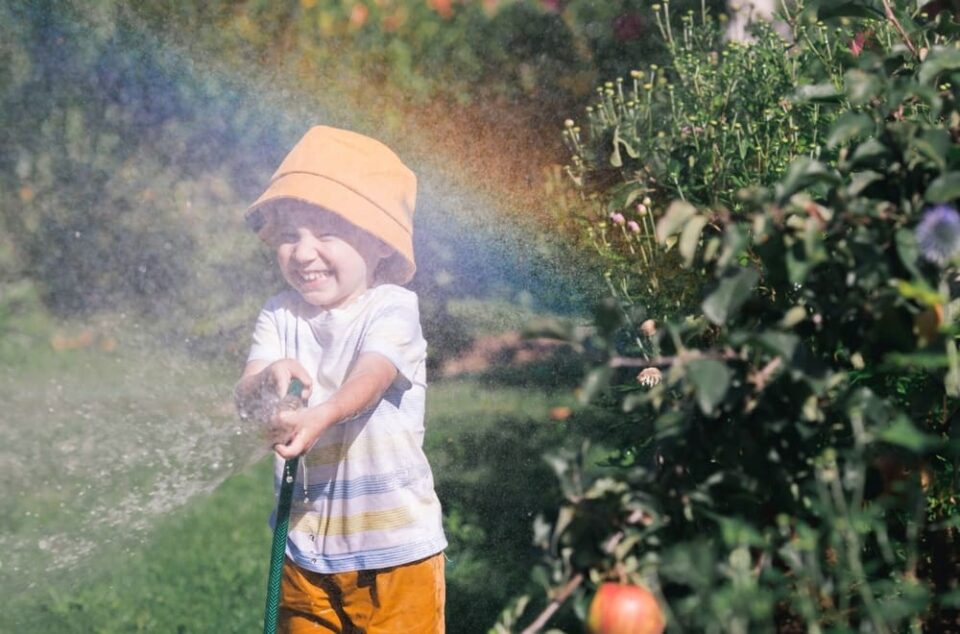
Learn about Rainbows with This Experiment and Colorful Craft
For many kids and adults, seeing a rainbow feels like witnessing a little bit of magic. They seem to appear out of nowhere, streaking through the sky after a rainstorm, streaming out of hoses on a sunny day, or brightening up the yard as your kids run through the sprinkler.
But what is a rainbow? The truth is rainbows aren’t magic—they’re science at work. That means you and your children can make a rainbow in your kitchen with a simple experiment. And after you’re finished, you can create a rainbow that will last with a fun and easy craft!
How Do Rainbows Form?
In simple terms, rainbows form when light hits drops of water. When a light source, like the sun, passes through droplets (such as rain or mist), the light changes direction inside the water. A process called “dispersion” separates the light into several different colors, which are then reflected toward the observer’s eyes.
Rainbows are made up of seven colors: red, orange, yellow, green, blue, indigo, and violet (the initial sound of each is easy to remember as ROYGBIV). All the colors are only visible at once if the viewer stands at the perfect angle—this is why some rainbows appear to fade away before they can form a complete arc. “Firebows,” the small, flat stacks of color that sometimes appear over high-altitude clouds, look the way they do for the same reason.

How to Make a Rainbow with a Flashlight
To teach your kids about dispersion and rainbow formation, you don’t need to keep an eye on the weather forecast and wait for a rainy day. Young scientists can learn how to make a rainbow with water and a flashlight at home!
Kids of all ages can perform this experiment, but an adult should be nearby to help as needed.
Materials
- Glass of water
- Small mirror (fits inside the water glass)
- Flashlight
Directions
- Put the glass of water on a table. Place the mirror inside the glass at an angle, so it rests against the side.
- Turn out the lights and ensure the room is completely dark.
- Turn on the flashlight and shine it through the side of the glass toward the part of the mirror under the water.
- Watch a rainbow appear!

What’s the Science behind Rainbows?
We know rainbows form when light passes through water droplets and undergoes dispersion. But why does water make it happen?
It has to do with how light travels. Light behaves like a wave when it travels through space. Scientists measure these waves by their wavelengths, and the human eye sees each wavelength as a different color. Normally, light waves of all different wavelengths blend together to make white light, but when the light travels through water, they separate to make a rainbow.
What makes the light waves separate when they pass through water? A scientific process called refraction. When light enters a drop of water, it refracts (or bends) at an angle. This is because when light travels from air into water, it slows down and changes direction. Each wavelength refracts at a slightly different angle, separating the colors inside the droplet. Some of the refracted light bounces off of the back of the droplet, redirecting toward your eyes. As it leaves the droplet, it refracts again (see the image above). This process causes the light to disperse into its different wavelengths as it exits the droplets, creating a rainbow.
Craft Your Own Rainbow
Create an indoor wonder that will never disappear with this rainbow craft for kids. Children of all ages can perform the steps listed here, but adults may want to assist younger children with the glue.
Materials
- Square or rectangular pieces of styrofoam
- Pipe cleaners in rainbow colors (ROYGBIV)
- Cotton balls
- Nontoxic glue
Directions
- Gently bend the pipe cleaners to create an arc shape.
- Line up the pipe cleaners in order of the colors of the rainbow, with red on the outside and violet on the inside.
- Stick the two ends of the pipe cleaners into the styrofoam base.
- Glue cotton balls to the styrofoam on both sides of the rainbow to create fluffy clouds.

Other Amazing Facts about Rainbows
As you conduct your rainbow experiment and make your craft, wow your kids with these amazing facts about rainbows:
- Earth is the only known planet with water rainbows. Rainbows need light and transparent droplets of liquid to form. There’s only one planet in our solar system with enough water in the atmosphere for light to form rainbows: Earth! But even though Earth is the only known planet with water rainbows, there may be other kinds of rainbows out there! The atmosphere on Titan, one of Saturn’s moons, is full of liquid methane, which is transparent. Astronomers suspect that rainbows on Titan, if they exist, are even larger than the ones on Earth.
- Rainbows appear less often in the winter. Have you noticed there are fewer rainbows in the winter months? There’s actually a reason for this. When the temperature falls below freezing in the winter, water droplets in the air freeze and become snowflakes. Most snowflakes are not spherical, which means the light traveling through them cannot refract and reflect as it would with water droplets.
- The world’s longest-observed rainbow to date appeared in 2017. On November 30, 2017, researchers at the Chinese Culture University in Taipei, Taiwan, observed a rainbow for a total of 8 hours and 58 minutes. This was a pretty astounding phenomenon, as the average rainbow typically lasts less than one hour.
Bring Science Home for Your Kids
Whether you’re creating rainbows out of pipe cleaners or demonstrating dispersion in your kitchen, hands-on activities are a great way to help kids understand and appreciate science. Once you’ve finished the activities here, go ahead and try something new!
Let your kids study density by stacking rainbow colors of sugar water in a glass, or watch other natural phenomena at work by making fizzy potions from baking soda and vinegar.
If your kids are still eager to experiment, sign them up for an award-winning science-based subscription box from Little Passports. Science Expeditions teaches children ages eight and up about advanced scientific topics, such as aerodynamics and solar energy, while Science Junior contains experiments to thrill kids ages five through eight. With either subscription, each month you’ll receive a box full of learning activities and global stories to help your budding scientists explore the world around them.
